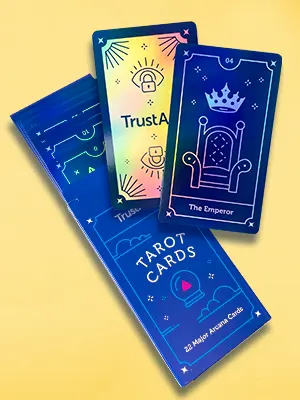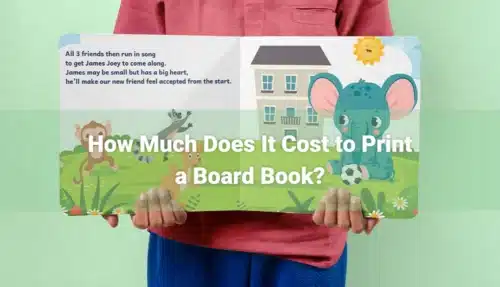We explore how to self-publish your book with an offset printer to get the highest quality product at the lowest price point.

Dreaming of seeing your self-published book compete alongside traditionally published bestsellers—but worried about quality, cost, and complexity? You’re not alone. Many authors have found tremendous success and financial sustainability by choosing offset printing. With better quality control, superior final products, and substantial cost savings at scale, offset printing can give your book the competitive edge it needs.
Self-publishing your book is a dream come true for many aspiring writers. But it’s not as simple as just uploading your MS to Amazon and waiting for the royalties to roll in. It takes time, effort, and money to get that manuscript into readers’ hands — and unless you have those things to spare, you probably don’t want to give up your day job and take up selling books on the side. Self-publishing requires planning, investment, and hard work from beginning to end. But with the right preparation and support network behind you, it can be a rewarding experience rather than an arduous one.
In this guide, we’ll break down exactly how offset printing can help you become a successful self-published author.
At a glance:
| Key Step | Why It Matters | Offset Printing Advantage |
|---|---|---|
| Professional Book Design | Enhances visual appeal and marketability | Superior print reproduction and detail |
| Choosing Specifications | Impacts cost, reader appeal, and usability | Wide range of premium options at lower costs |
| Defining Audience | Targets marketing efforts and boosts sales | Professional-quality product increases appeal |
| Developing a Powerful Cover | Critical for attracting reader interest | Offset printing delivers vivid, lasting colors |
| Establishing Print Run Quantity | Determines initial investment and unit cost | Lower per-unit cost with larger quantities |
| Effective Marketing Plan | Essential for visibility and sustained sales | High-quality print enhances marketing efforts |
| Timeline Planning | Keeps production and release on schedule | Offset offers reliable production timing |
Decide where to get your book printed
You’ll get the best results if you print your book with an offset printing company rather than a print-on-demand or digital printing service. Offset printing allows for greater control over the printing process, provides a higher quality product, and is always less expensive than digital printing when printing large quantities. To get the best results from an offset printer — hello, that’s us! — you’ll need to provide them with high-quality artwork, layout, and design. There are several steps you can take to achieve this, from hiring a professional designer to using software such as Adobe Illustrator or InDesign to create your book’s layout if you are tech savvy or prepared to climb the learning curve.
Work out printing and publishing time scales
On average — note that mileage varies enormously from author to author — self-publishing a book takes about six months from the initial idea to holding a published copy in your hands. For successful self-publishing, you need to make sure that every step of the process is completed correctly, so you can — hopefully — hit the best-seller lists and make your mark in the publishing industry. To self-publish a book, you’ll need to hire an editor to make sure your book is the best it can be; hire a designer for the cover art and interior and get your book formatted; select your printing company, make sure all your files are “print-ready” and finally send them to the printer. To make sure that everything runs smoothly and on time, hire professionals for each step, or at least be prepared to spend a lot of time learning new skills if you’re dead set on managing each process yourself.
Select your audience
Once you’ve completed the manuscript for your book, you need to decide who you’ll be targeting with your marketing strategy. This will help you figure out where to sell your book and what promotional avenues to explore. Research your audience at this stage and use their demographics to inform your marketing strategies. You may decide to target specific groups, such as entrepreneurs or university students, or you may decide to focus on a general audience.
Develop a powerful cover
As soon as you’re happy with your manuscript, you need to prepare your marketing materials. This includes your book’s cover, which could be the difference between a few hundred sales and thousands. A well-designed cover is essential to a book’s success, but many self-published authors don’t have a background in graphic design. If you’re not confident in your ability to design a cover, you can hire a freelancer or outsource this part of the process. If you’re not satisfied with the first cover design you receive, don’t be afraid to cut ties and seek a new designer. You want to be happy with your cover, and you want it to look professional.
Write your marketing plan
Just because you’ve successfully self-published a book doesn’t mean that thousands of readers will rush to buy it. It’s far more likely that your book will go unnoticed, buried under the millions of other titles released every year. Publishing a book is just the beginning. You need to work hard to let people know your book exists and why they should read it.
If you want to make sure that your book has a fighting chance, you need to establish a marketing plan for the day you publish. And you need to stick to this plan religiously.
Here are our most helpful tips to make sure that your book marketing efforts are as successful as possible. By doing what you can to market your book successfully, you can help it achieve maximum sales potential and make the most of the opportunity it offers you as an author.
- First, you need to make sure that your book has the right metadata, such as a detailed description, in order to increase discoverability on Amazon, Barnes and Noble, and other online bookstores.
- You’ll need to register and incorporate an ISBN and barcode into your cover design if you want to get your book in the mainstream bookseller’s catalogs. Go to Bowker in the US and Nielsen in the UK to buy and register your numbers and codes.
- Next, it’s important to spread the word about your book. One of the best ways to do this is by hosting a series of book launch events. Independent bookstores, libraries, and reading groups are all good options to explore.
- Choose the right platform for your book marketing — usually your author website and blog — and create a strong social media presence.
From the moment your book is published, you should think about how you can use your book to grow your business and reach more readers. This might seem like a daunting task, but these are some simple steps you can take to make the most of your book marketing campaign.
Choose your specifications and materials
Before you design your book, you need to decide on the specifications — size, binding style, and materials you’ll use. This will vary based on the type of book you’ve written, but there are a few things to think about when selecting materials. First, you’ll need to decide if you want to go with a hardcover or paperback book. Hardcover books are more durable and fancier, but they’re also more expensive. Similarly, you’ll need to decide if you want your book to be printed in color or black and white. Finally, you’ll want to select the paper type and color. Paper type will change the feel and look of your book, and it will also affect its price.
Determine Your Print Run
The first step in determining your print run is to decide how many books you’ll need. This will depend on your marketing strategy, but it’s always a good idea to overestimate, especially if you’re planning to sell your book at events or on your website. For example, if you know you need 100 copies to sell at one event, it’s better to order 200 than be caught off-guard, short-stocked, and unable to meet demand. And remember that with offset printing, the more copies you order in a single print run, the less you pay per copy.
FAQs
1. Why is offset printing preferable for self-published authors?
Offset printing delivers superior quality, vibrant colors, professional binding options, and cost savings for large print runs compared to digital alternatives.
2. How many books should I print initially?
Consider printing enough copies (typically 500–1,000+) to reduce per-unit costs significantly and to ensure you have enough inventory for events, marketing campaigns, and online sales.
3. Is offset printing suitable for new authors?
Absolutely! Many new authors choose offset printing because it offers a polished, bookstore-quality product that can enhance credibility and reader interest.
4. Can offset printing help me get into bookstores?
Yes. Offset-printed books are indistinguishable from traditionally published books, improving your chances of getting stocked by bookstores and libraries.
5. Will offset printing delay my book launch compared to digital printing?
While offset printing requires a bit more setup time, careful planning typically ensures timely production, and the benefits of superior quality outweigh the minor additional wait.
6. Do I need professional design software to prepare files for offset printing?
Professional software like Adobe InDesign or Illustrator is ideal.
Talk to us. We can help!
Nowadays, successful self-published authors are making a good second income or even a full time living by publishing their works and getting them into readers’ hands quickly, efficiently, and affordably through their own efforts as independent creatives. If you’re ready to publish your book and make readers fall in love with it, talk to us first about the offset printing services that best suit your needs. We have over 25 years’ experience in the industry, the latest technology, and a truly friendly team dedicated to personalized customer service. Get in touch today for a chat about your needs or to ask us for a project-specific quote. Shoot us an email at [email protected] or call us at +1 951 866 3971, and we’ll be delighted to discuss your needs. We can’t wait to play our part in your success!










